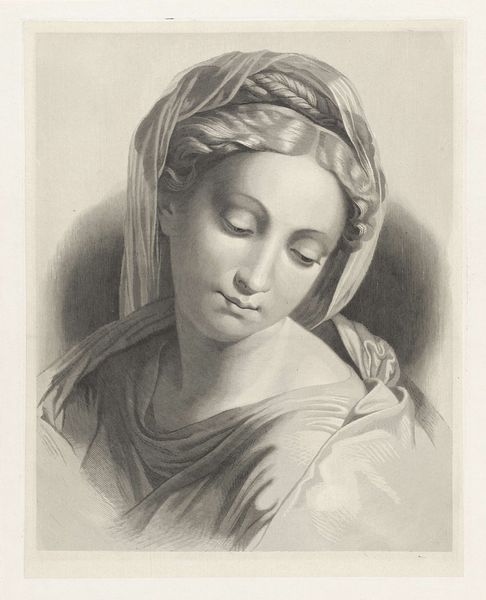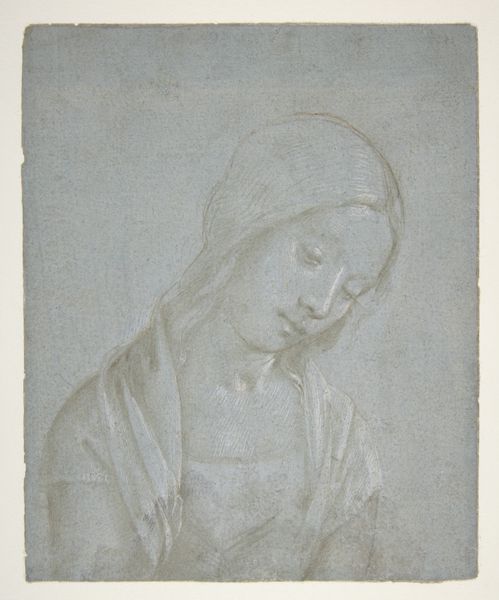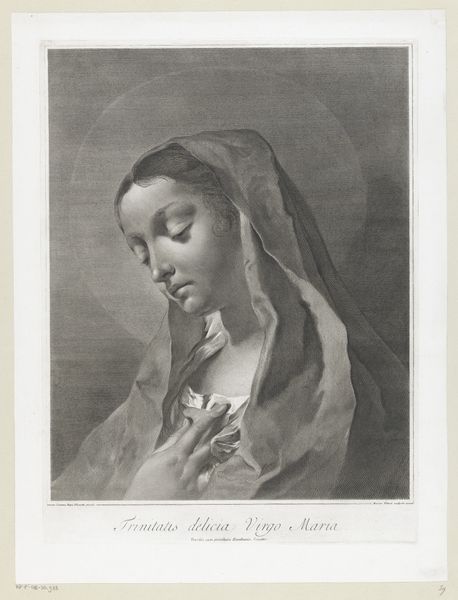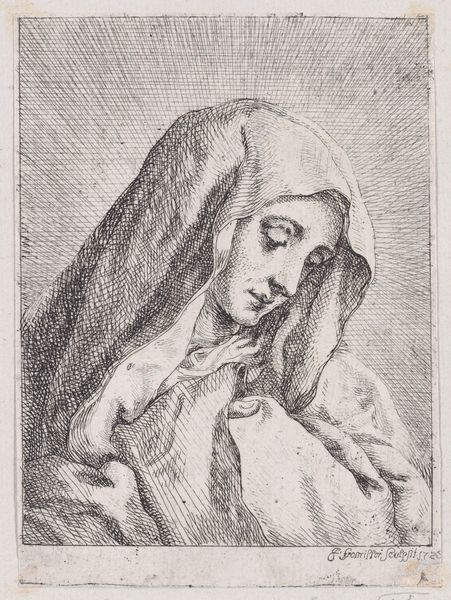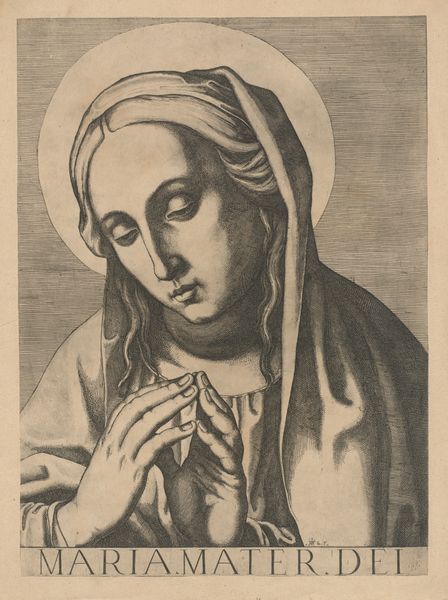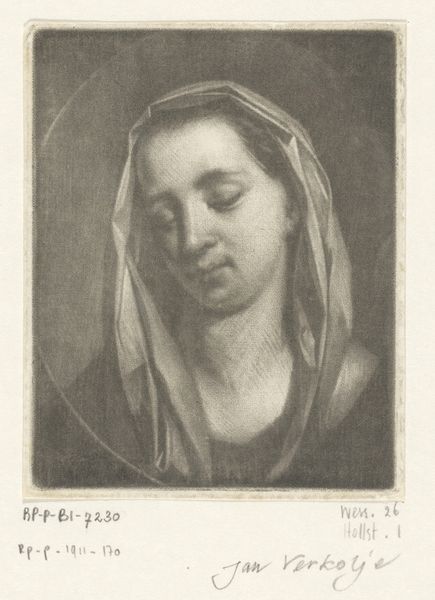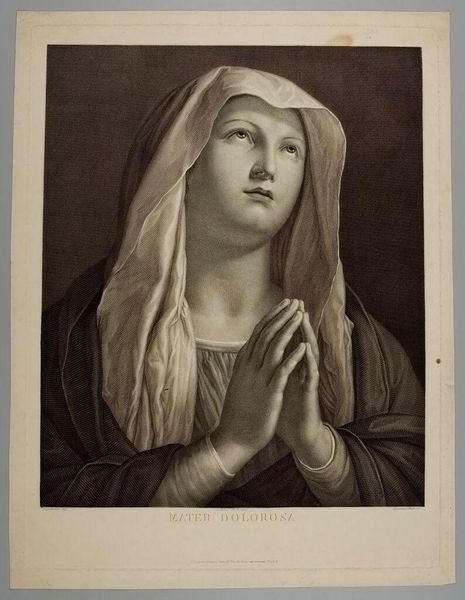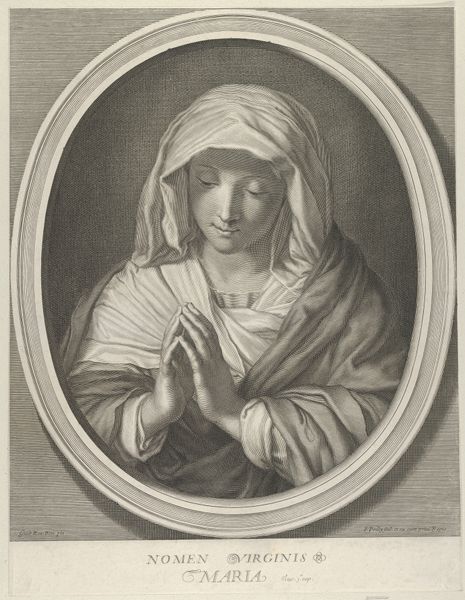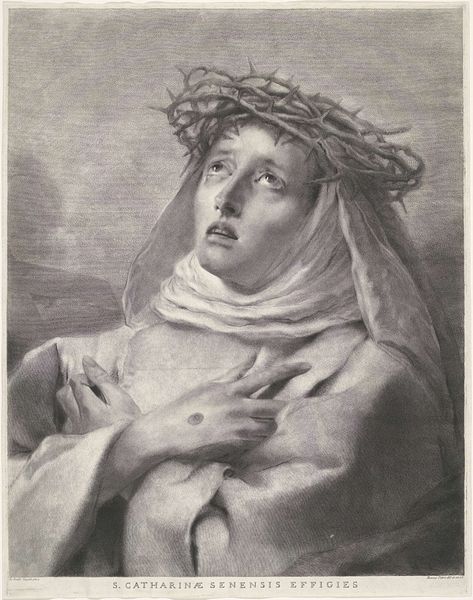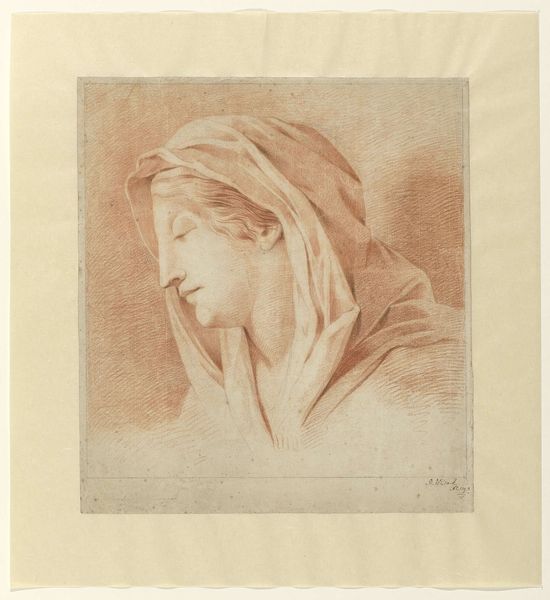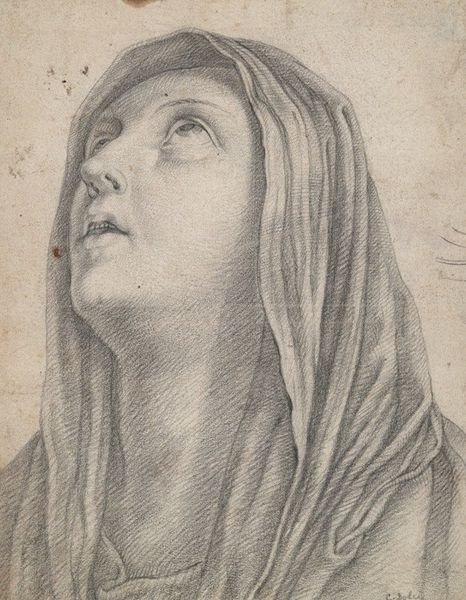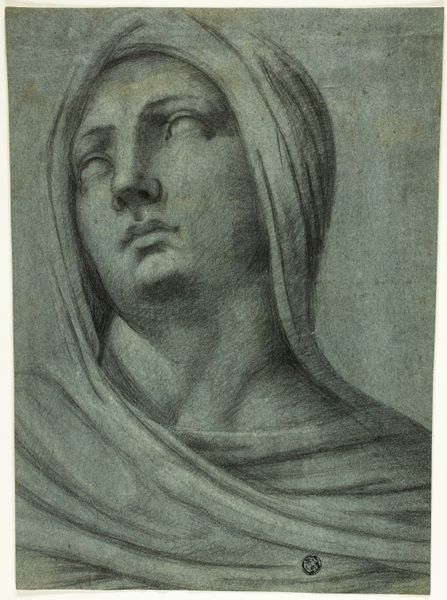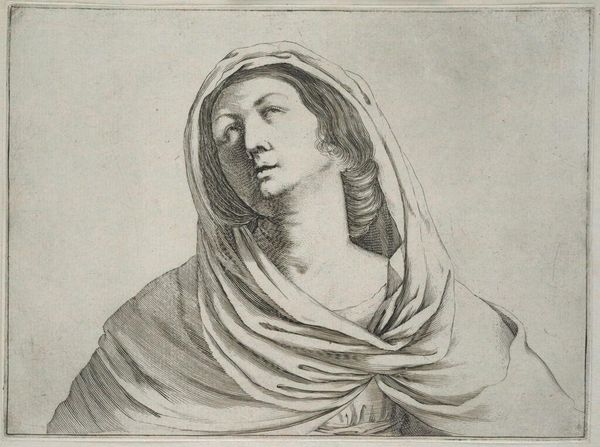
drawing, pencil
#
portrait
#
drawing
#
neoclassicism
#
pencil
#
portrait drawing
#
academic-art
#
portrait art
Dimensions: height 442 mm, width 343 mm
Copyright: Rijks Museum: Open Domain
Curator: This captivating pencil drawing is titled "Head of a Veiled Woman," created in 1781 by Cornelis van Noorde and held at the Rijksmuseum. The subject's bowed head and shadowed face create a profoundly somber effect, wouldn't you agree? Editor: It does strike a heavy chord, yes. The drawing itself—the quality of the graphite and paper—gives the piece a unique sensibility. The very act of creating this piece must have been a meditative labor. Curator: Indeed. Consider the social context in which van Noorde lived and worked, navigating a society entrenched in restrictive norms concerning female agency and expression. This veiled woman perhaps symbolizes the repression of identity, her downcast gaze emblematic of the limitations imposed upon women. Editor: Absolutely. Thinking about materials, however, I'm intrigued by the paper’s evident aging. I wonder about its provenance and the choices that were made in its preparation. Pencil itself offers a very humble means for the artist to realize this work. This speaks to availability and resourcefulness. Curator: The veil itself can be viewed as a powerful signifier, open to numerous readings from modesty and piety to enforced silence. The drawing's neoclassical style emphasizes clarity and idealized form. In a way, this woman seems almost like a marble bust brought to life, imbuing her with timeless sorrow. How does her neoclassical aesthetic interplay with your interest in production, especially concerning this being only a sketch? Editor: The deliberate and controlled use of line work to give shape to the soft veiling creates the effect that her humanity is somewhat diminished or inaccessible. Pencil also allows for erasing. Can one see these modifications on close inspection? Curator: That’s a compelling question. The deliberate erasure and adjustments might reflect a struggle to capture not only the physical likeness of the sitter, but also to render the abstract quality of sadness—to somehow make tangible this deep emotional landscape. In this rendering, the personal and political intertwine to make something so expressive and impactful. Editor: And also how the access and application of this material informed that. Looking closer now I see all of this too! Curator: I find this drawing provides us with a focal point that fosters critical awareness concerning representations of gender and power dynamics. Editor: For me it illuminates the story behind material conditions, an example that elevates craft as something with significance in artmaking and a valuable form of labor.
Comments
No comments
Be the first to comment and join the conversation on the ultimate creative platform.
